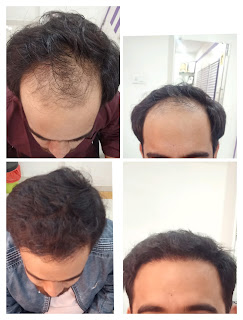Unveiling the Art and Science of Hair Transplants: A Plastic Surgeon's Perspective
Introduction:
Hair transplant surgery has emerged as a revolutionary solution for individuals grappling with hair loss, offering not just restored locks but also renewed confidence. As a plastic surgeon specializing in hair restoration, I am excited to delve into the intricacies of this transformative procedure, combining artistry and medical expertise to achieve natural-looking results.
Understanding Hair Loss: Before delving into the world of hair transplants, it's crucial to comprehend the underlying causes of hair loss. Genetics, hormonal changes, and certain medical conditions contribute to hair thinning or baldness. Hair transplant surgery addresses these issues by relocating healthy hair follicles to areas with thinning or no hair, facilitating natural hair growth.
The Art of Hairline Design: One of the hallmarks of a successful hair transplant lies in the meticulous design of the hairline. As a plastic surgeon, I approach this aspect as an art form, considering facial symmetry, patient preferences, and age-appropriate design. Crafting a natural-looking hairline requires both precision and an understanding of aesthetic principles, ensuring the final result harmonizes with the individual's overall appearance.
Follicular Unit Transplantation (FUT) vs. Follicular Unit Extraction (FUE): Two primary techniques dominate the field of hair transplantation: FUT and FUE. FUT involves removing a strip of scalp containing hair follicles, dissecting it into individual grafts, and transplanting them to the recipient site. On the other hand, FUE involves extracting individual follicular units directly from the donor area without the need for a strip. Each technique has its advantages, and the choice depends on factors such as the patient's preferences, the extent of hair loss, and the surgeon's expertise.
The Surgical Process: Hair transplant surgery is an outpatient procedure performed under local anesthesia. The duration varies depending on the technique and the extent of the transplant. After harvesting the donor grafts, tiny incisions are made in the recipient area to accommodate the follicles. Precision is paramount to achieve a natural distribution of hair. Post-surgery, patients can expect some swelling and minor discomfort, which typically subsides within a few days.
Recovery and Results: Patience is key during the post-operative phase, as it takes several months for the transplanted hair to grow and fully integrate with the existing hair. The transplanted hair undergoes a shedding phase before regrowth, a normal part of the process. The final results, however, are well worth the wait, offering a permanent and natural-looking solution to hair loss.
Conclusion: In the realm of plastic surgery, hair transplant procedures exemplify the fusion of medical expertise and artistic finesse. As a plastic surgeon dedicated to restoring both hair and confidence, I am committed to ensuring that each patient's journey is a harmonious blend of science and art. With advancements in technology and an understanding of individual needs, hair transplants continue to redefine the landscape of cosmetic surgery, empowering individuals to embrace a fuller, more confident version of themselves.


Comments
Post a Comment